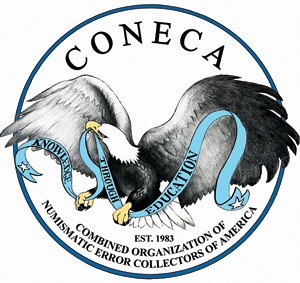
PREV ARTICLE
FULL ISSUE
PREV FULL ISSUE
FEATURED WEB PAGE: GLOSSARY OF ERROR-VARIETY TERMSThis week's Featured Web Page is the Glossary of Error-Variety Terms from the web site of the Combined Organizations Of Numismatic Error Collectors of America (CONECA)
Abnormal reeding
Abrasion doubling

conecaonline.org/content/glossary.htmlWayne Homren, Editor The Numismatic Bibliomania Society is a non-profit organization promoting numismatic literature. See our web site at coinbooks.org. To submit items for publication in The E-Sylum, write to the Editor at this address: whomren@gmail.com To subscribe go to: https://my.binhost.com/lists/listinfo/esylum All Rights Reserved. NBS Home Page Contact the NBS webmaster 
|